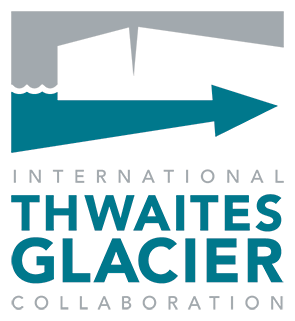A team of glaciologists, including researchers part of the International Thwaites Glacier Collaboration, used high-resolution satellite radar data to find evidence of the intrusion of warm, high-pressure seawater many kilometers beneath the grounded ice of West Antarctica’s Thwaites Glacier.
In a study published this week in Proceedings of the National Academy of Sciences, the University of California-led team said that widespread contact between ocean water and the glacier – a process that is replicated throughout Antarctica and in Greenland – causes “vigorous melting” and may require a reassessment of global sea level rise projections.
The glaciologists relied on data gathered from March to June of 2023 by the ICEYE commercial satellite mission. The ICEYE satellites form a “constellation” in polar orbit around the planet, using InSAR – interferometer synthetic aperture radar – to persistently monitor changes on the Earth’s surface. Many passes by a spacecraft over a small, defined area render smooth data results. In the case of this study, it showed the rise, fall and bending of Thwaites Glacier.
Lead author Eric Rignot, a professor of Earth system science and part of the International Thwaites Glacier Collaboration MELT team, says:
“These ICEYE data provided a long-time series of daily observations closely conforming to tidal cycles. In the past, we had some sporadically available data, and with just those few observations it was hard to figure out what was happening. When we have a continuous time series and compare that with the tidal cycle, we see the seawater coming in at high tide and receding and sometimes going farther up underneath the glacier and getting trapped. Thanks to ICEYE, we’re beginning to witness this tidal dynamic for the first time.”
Rignot said the project helped him and his colleagues develop a better understanding of the behaviour of seawater on undersides of Thwaites Glacier. He said that seawater coming in at the base of the ice sheet, combined with freshwater generated by geothermal flux and friction, builds up and “has to flow somewhere.” Water is distributed through natural conduits or collects in cavities, creating enough pressure to elevate the ice sheet.
“There are places where the water is almost at the pressure of the overlying ice, so just a little more pressure is needed to push up the ice,” Rignot said. “The water is then squeezed enough to jack up a column of more than half a mile of ice.”
And it’s not just any seawater. For decades, Rignot and his colleagues have been gathering evidence of the impact of climate change on ocean currents, which push warmer seawater to the shores of Antarctica and other polar ice regions. Circumpolar Deep Water is salty and has a lower freezing point. While freshwater freezes at zero degrees Celsius, saltwater freezes at minus two degrees, and that small difference is enough to contribute to the “vigorous melting” of basal ice as found in the study.
Eric added:
“If we put this type of ocean-ice interaction into ice sheet models, I expect we will be able to do a much better job of reproducing what has happened in the past quarter century, which will lead to a higher level of confidence in our projections,” he said. “If we could add this process we outlined in the paper, which is not included in most current models, the model reconstructions should match observations much better. It would be a big win if we could achieve that.”
Co-author, Christie Dow, a professor at the University of Waterloo in Ontario, Canada said:
“At the moment we don’t have enough information to say one way or the other how much time there is before the oceanwater intrusion is irreversible. By improving the models and focusing our research on these critical glaciers, we will try to get these numbers at least pinned down for decades versus centuries. This work will help people adapt to changing ocean levels, along with focusing on reducing carbon emissions to prevent the worst-case scenario.”
MELT is an ice-based project to understand how warm waters are affecting the Thwaites Glacier at the grounding line – the point where the glacier goes afloat to become ice shelf. Data, gathered in the field over the past years, is being combined with ice sheet models and allowing researchers to more accurately predict the glacier’s potential sea-level contribution.






